Dear Friends and Family,
Well, my one-month homestay has come to an end! It was quite an adventure that I will never forget! I know that God will use what I learned there for years to come. As I research and look at different options for subsistence farmers, this family will come to my mind and I will ask myself, “Would this be do-able for Dilmer and Lupe?” I will continue to develop my relationship with them; as they teach me to understand more about their lives and as I encourage them in both their ministry as well as farm work.
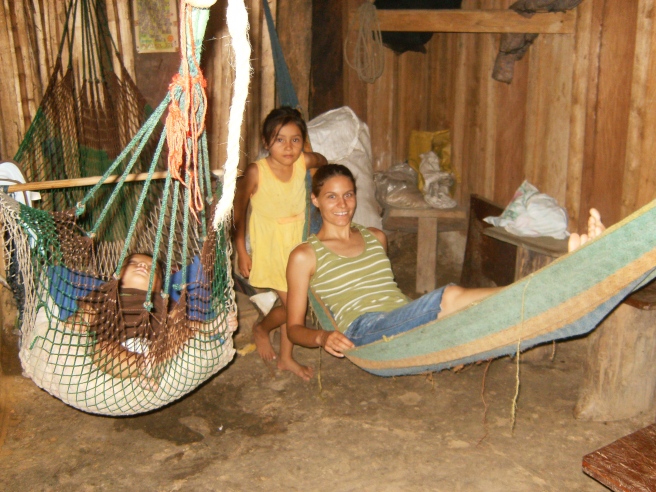
I believe the hammocks here are a symbol of the slower pace of life in this culture. Yes, you can find hammocks in the States, but how often do you actually see someone stretched out and enjoying one?!
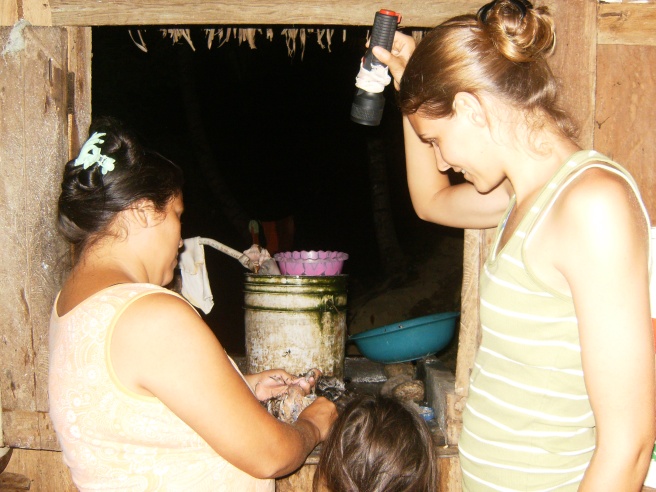
Dilmer and Lupe don’t have electricity. So in the evenings the flashlights and candles come out. Before living with this family, I never realized how wonderful it is to continue on with life (cooking, reading, playing games) even after nightfall. I’ve taken so much for granted. The days here pretty much come to a close once the sun sets. Usually the evenings are brightened up with a kerosene lamp and long conversations… about who God is, how we depend on Him, His constant provision for us, and the struggles we face in the work He has given us.
The community of La Muralla does have some electricity through a hydroelectric plant they built about 10 years ago. The government provided all the materials while the community provided the labor, so it was a joint project. However, at the time it was built Dilmer and Lupe weren’t living in La Muralla, so Dilmer never worked on the project. It was already finished by the time they moved there. Now, in order to get the electricity run to their house, they would have to pay 5,000 lempiras ($228) to the owner of the now privatized hydroelectric plant. Even still, the plant only provides electricity for a few hours each evening. The school, however, received a solar panel this year from the government. So Dilmer and Lupe send their cell phones with Heber (the school teacher) over to the school to have them charged. They pay the school 10 lempiras (46 cents) for each cell phone charge.
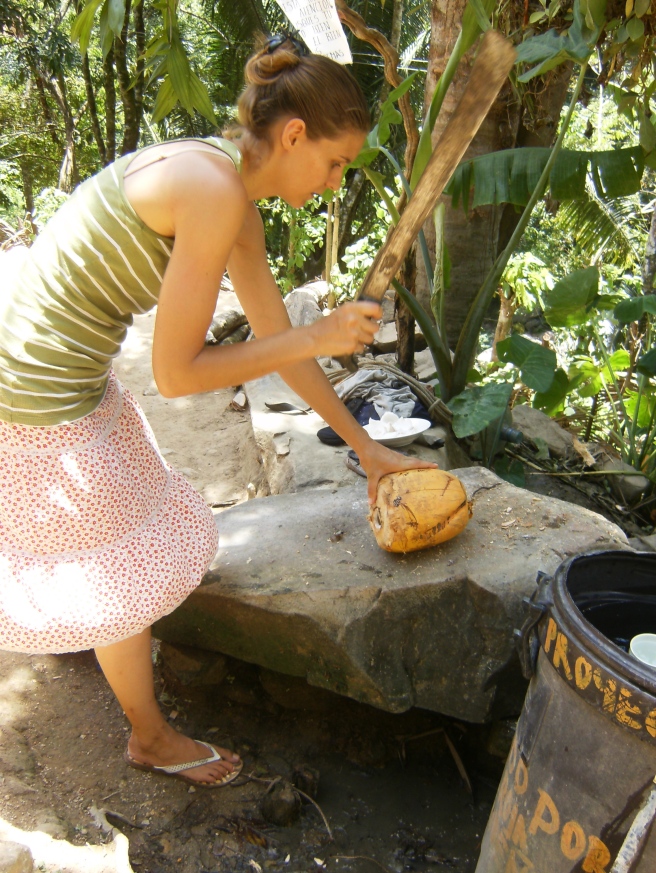
Our main diet here is rice, red beans, and boiled green bananas. These 3 make up the base for every breakfast, lunch, and dinner. Here are some other foods occasionally added: Honduran (salty) cheese, corn tortillas, avocado, egg, and wild meat.
*Side note: I just realized that in these first 3 pictures I’ve posted, I’m wearing the same tank top! I know these weren’t all taken on the same day. But I will mention that I didn’t take a wide variety of clothes (or things) with me during this homestay. I don’t want my relationship with this family to be tainted by a coveting of material possessions. I hope that my life testimony to all Hondurans includes the truth that yes, God has blessed me with financial resources, but at the same time (and even more so), He has passed on to me a responsibility to steward those resources wisely, to use them effectively, and to invest them in His eternal work. I pray that the way I manage the resources I’ve been entrusted with will reflect God’s calling to true work ethic and stewardship. That my example will cause others to abandon the material strivings of this world and turn their eyes to Jesus and His purpose for their lives.
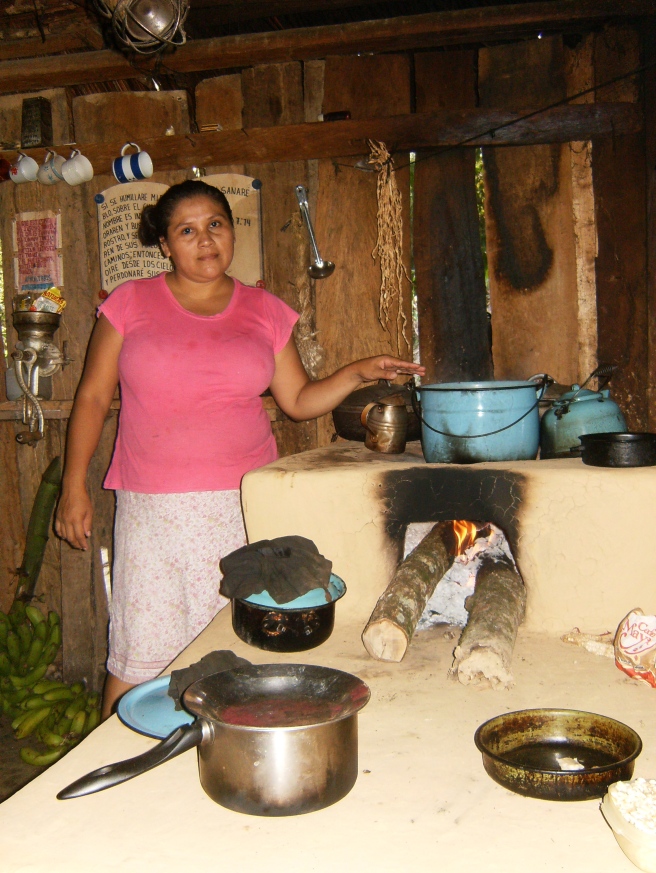
This is another example of a daily life issue I would like to address in my research. At ECHO I learned about several models of energy efficient stoves that could potentially reduce both the overbearing demand for firewood as well as dangerous smoke produced by these common cooking stoves.
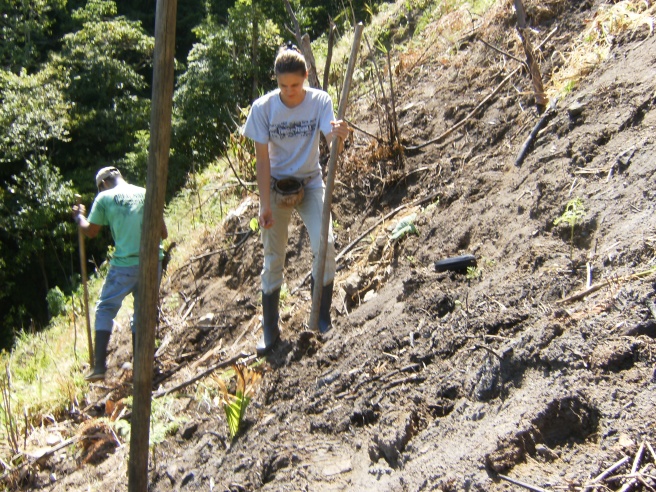
My modern-world, Kansas girl idea of planting and harvesting has been altogether contrasted this month as I’ve experienced the lengthy process Honduran subsistence farmers use to feed their families. The tools needed for planting beans are simple: a gourd strapped around the waist to hold the beans and a dibble stick. The method sounds just as simple: forming staggered rows, plant the beans 4 or 5 to a hole. I found it hard to throw the beans, sometimes from 6-8 feet away (due to the steep slope of the land) directly into the planting holes. What I found even more difficult? Forming staggered rows in uniform lines on the uneven slopes and rocky ground. For Dilmer and his brother, this is all second nature, as they’ve been planting like this their entire lives.
In asking Dilmer about the typical routine for using land he told me they slash and burn a plot of forest, plant and harvest 2 crops, then leave the plot for 8 years until it has reforested. This cycle is repeated, until the land gets “tired” and no longer produces a crop. As you can imagine, an effective change in methods could have a dramatic impact in the lives of these subsistence farmers. Changes in the practices of soil preparation, erosion management, and weed control could truly transform their daily work. I pray that God uses my life as a tool to equip and empower the poor to help themselves. As I research the physical tools God has given us to impact lives physically, I share with others the spiritual tools He has given me to come to know Him and walk with Him every day.

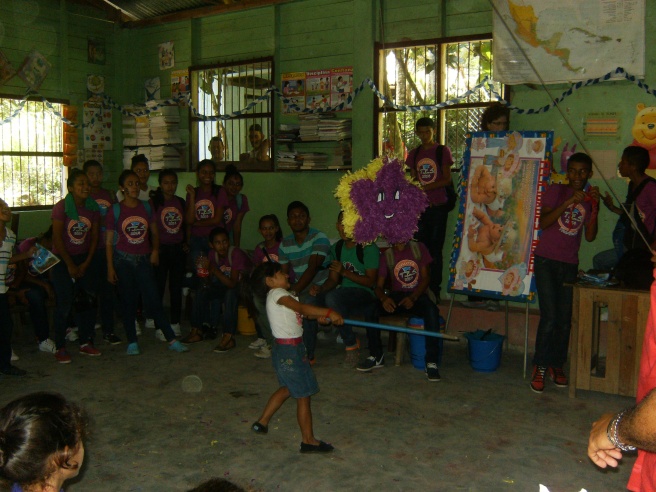
The school here in La Muralla is a typical rural school. It’s a one-room schoolhouse where grades 1-6 are all taught together. The teacher, Heber, has been teaching there for 10 years now. He currently has 11 students and appreciates having a smaller number of students to teach at one time.

September is full of celebrations! On September, 15 1821 Spain granted independence to Honduras along with the rest of the Central American provinces. Every year, students throughout Honduras march in parades, representing their schools and the 5 countries in Central America that gained independence that day: Guatemala, Honduras, El Salvador, Nicaragua, and Costa Rica.
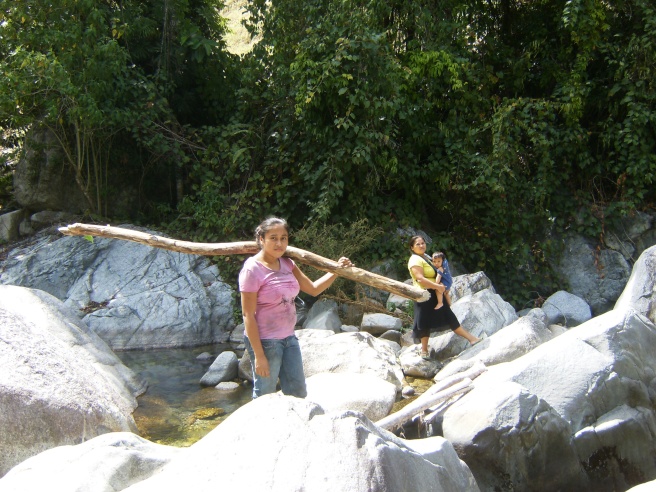
This is a typical, everyday hike. Lupe had taken baby Gabriel and older sister Katerin over to see her in-laws, a 20 minute walk from their house. Odalis, Dilmer, and I had come down after working in the field that morning and brought back with us some firewood we picked up along the way. Now we are all headed back home together… over the river and through the woods.
Prayer Requests:
- Continue to pray for my annual residency renewal. I received another visa extension last week, as my file still has not arrived at the immigration office in La Ceiba. There seems to have been some confusion at the office in Tegucigalpa, so this residency renewal process is taking a very long time! Please pray that it arrives soon!
- Also continue to pray for God’s direction as I look into grad school opportunities. I think the University of Florida has a program that fits great with what I would like to study. They offer a minor in Tropical Agriculture! Pray that God would open doors for a research assistantship if that’s His will for me.
- This month Larry and Allison concluded the weekly meetings where they clarified the purpose and vision of the ministry for the discipleship group. They asked each person to pray and ask for God’s will to be made known and for each one to make an individual decision if they would continue. After several weeks of meetings and many hours of discussions, 2 students (one in high school and the other in college) have decided to continue on in the discipleship group. Please pray for God’s faithful direction for Larry and Allison, as they lead us through the changes here at campus over the next few weeks.
- Please pray for Job’s health. He has been experiencing chest pain for awhile now and finally went to the doctor this month. He has high cholesterol and triglycerides as well as pericarditis. Basically, if he does not change his diet he will have a heart attack. Please pray for him as he makes some drastic changes for his health. Pray for him as he says “no” to pop and fried foods… both a part of the typical Honduran diet.
Praise God:
- For a great learning and sharing experience during my homestay at Dilmer and Lupe’s!
- For the first rains we have received, after having drought conditions not typical for this time of year in Honduras!
- For the lessons we have been learning in the discipleship group as we walk through this process together; learning how to communicate and learning how to have patience as God teaches us in difficult and uncomfortable situations.
Love in Christ,
Adria